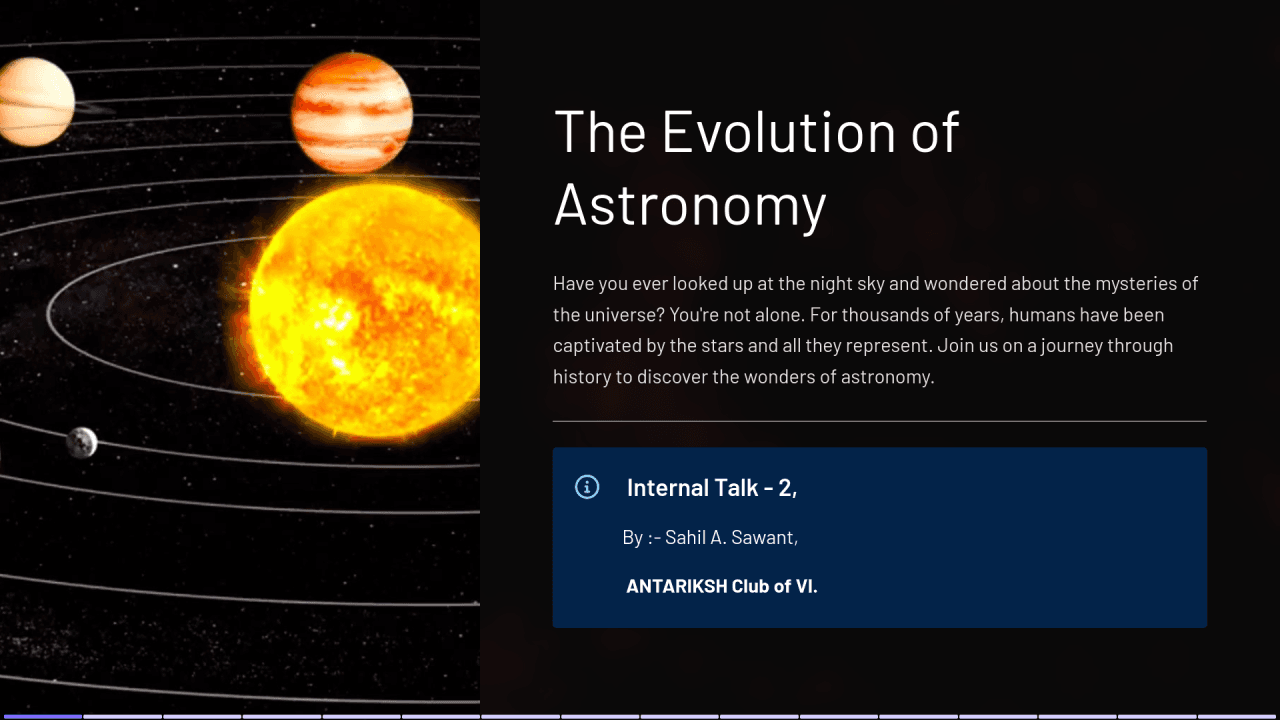Speaker: Sujal Malapure
Date and Venue: 31st August 2024, VIIT pune
The Antariksh Club VI conducted its 4th episode of the Internal Talk series on 31st August 2024, Saturday at 2:30 pm. The title of the talk was 'Brief History of Light and Introduction to the Theory of Relativity' delivered by speaker Sujal Malapure, a volunteer at the Antariksh Club VI currently pursuing his B.Tech from VIIT.
The talk proceeded with a basic interrogative interaction questioning the basis of the concept of light.As the talk proceeded, different observational experiments conducted to study the nature of light were discussed, including the very famous Galileo's Light Experiment. The experiment, though famous, was a failure since Galileo couldn't measure the speed of light due to the unavailability of resources and hence his assumption of light having a finite measurable speed was not concluded through the experiment.
During the talk Sujal included the mention of the famous James Maxwell’s Theory of light being an electromagnetic wave. According to Maxwell’s observations electric and magnetic fields travel through space as waves moving at the speed of light he explained this in the year 1865. In the year 1885 his predictions were later validated when Henrich Hertz discovered the existence of electromagnetic waves .
The next experiment that was studied and discussed was Ole Roemers telescopic observations he derived while studying the eclipses of moons of Jupiter using a telescope in the year 1676. Through this experiment, he concluded that light travels through a finite speed, the light speed being 131000 miles per sec.
The talk delivered insights of the Michelson Morley experiment which concluded that light does not need any medium to travel and its speed remains constant though in vacuum irrespective of any prevailing conditions.The talk explained the concept of Time and relativity delving through concepts of Time Dilation , Length Contraction , Energy Mass Equivalence and Space Time Curvature.
The theory of Special Relativity and Time Dilation was emphasised through the Classic Train example explaining the relative motion of light to a passenger travelling into a train through comparisons of their frames of reference. Explaining how the time appears to be slower in comparison with a relatively faster object from the perspective of a stationary observer. Explaining the basis of time dilation.The introduction to Lorentz contraction described it as one of the consequences of Einstein's theory of relativity. Length contraction occurs when a moving object's observed length is shorter than its actual length.The discussion explained how the roots of space time curvature propose that the presence of mass or energy warps and curves the fabric of spacetime, the more the mass of the object the more deep and larger are it will warp around.
Broadening the spectrum of Special relativity the talk stressed on its three fundamental postulates. First, the laws of physics being the same for all observers moving at constant speeds. Second, there is no preferred frame of reference; all are equally valid. Third, the speed of light in a vacuum is constant for all observers. These postulates have led to revolutionary concepts like time dilation, length contraction, and energy-mass equivalence.The conclusions of Special Relativity and its drawbacks were elaborately stressed through the discussions delivered by Sujal.
The session concluded with a Q&A session where the doubts and queries of the attendees were demystified through explanations by the speaker and the Core members.



